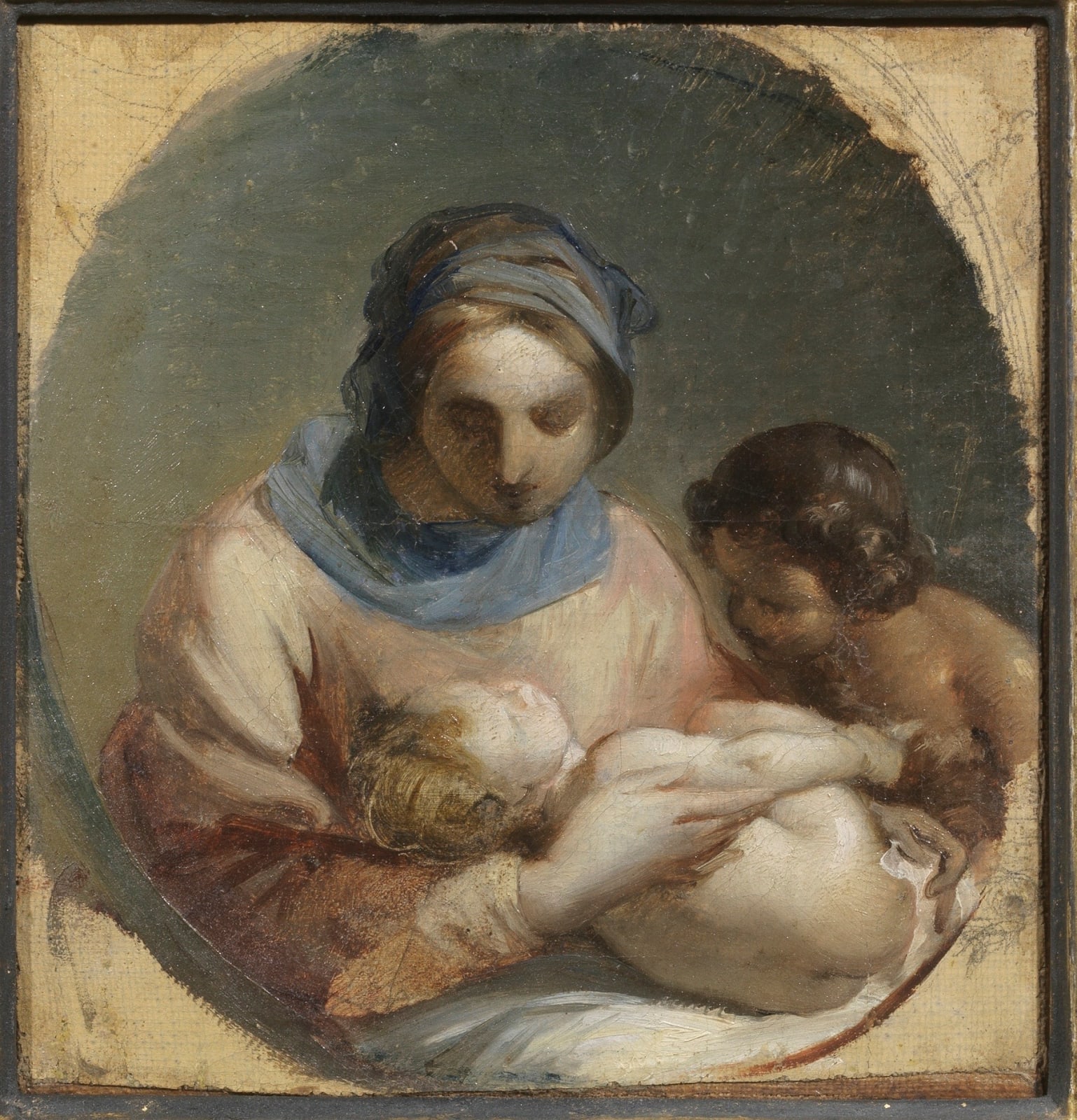
Filippo Pedrini attr. Italy, 1763-1856
15.5 x 15.5 cm
Literature
UnpublishedExpertise by Nicola Spinosa
This small canvas, a refined sketch, exemplifies the masterful spontaneity and unfinished elegance that mark great painters. Its preparatory black chalk drawing remains visible beneath fluid brushwork, especially in the Virgin and Child. The foreshortened Christ, complex in pose and shadow, reveals depth and anatomical precision. A reddish underpainting enhances chiaroscuro and lifelike flesh tones. Stylistically, the work echoes seventeenth-century Bolognese masters like Guercino and Reni, yet aligns more closely with the Gandolfi brothers and early neoclassicism, notably Felice Giani. Attributed to Filippo Pedrini, the canvas reflects his early Gandolfian training and evolving neoclassical taste. His decorative work in Bologna’s noble palaces and ecclesiastical commissions, such as those in San Bartolomeo and Palazzo Pallavicini, confirm his role bridging Baroque tradition and modern sensibility. The painting’s introspective figures and restrained palette suggest a personal, transitional moment in Pedrini’s career, inviting contemplation across centuries.